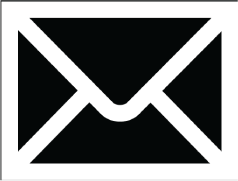What's keeping your brand from integrating geo-fencing into its app?
-
 Technology
Technology
-
 Read in: 3 mins
Read in: 3 mins
- by: Alexis Prousis
So, geo-fencing intrigues you. Then what's the hold up? A majority of brands we meet are confused about how to integrate our technology into their apps. Some fear that the process might be too complicated to execute. While, others think it's too late to add the technology since their app is developed and already in the App or Google Play Store. We run into many inaccurate assumptions about how Digital Factory's geo-fencing technology works that we decided to address some of the more common ones and explain how the process works.
Myth #1: It's too complicated
Any mobile application has a source code that contains the logic for the app. The source code tells the app what you want it to do and how you want it to look. This code, once compiled, can run on the targeted device whether Mac, iOS, Android or PC.
When you work with us, we will provide your developer with our SDK (software development kit). If the source code is an all-encompassing tool belt, think of Digital Factory's SDK as a pair of binoculars the app could use to spot potential customers. You don't need to assemble binoculars. You just go to the store and buy them. Someone else just puts them together.
Just like binoculars are bought ready to use, our SDK includes everything your app needs to run our geo-fencing services and allows your app to target specific consumers with engaging content at the right moment. Your developer simply has to plug it into their source code to run it. They won't need to write any additional code or design any new windows or pages. It's just that easy.
Myth #2: It will interrupt our existing technology and create additional work
Digital Factory's geo-fenced technology is a turnkey solution. Your app developer can turn our SDK on and off at your request. The SDK won't change the user interface of the app. You can create content for your geo-fenced marketing campaign or we can do it for you. It's seriously plug and play.
Our geo-fences use GPS, but our SDK won't drain your battery, Here's how: We poll for location updates by primarily using Wi-Fi and cellular signal triangulation. Then balance those updates against CPU utilization to further optimize battery life. Moreover, our technology also takes into account speed, acceleration, direction and the distance a mobile phone is from a set of geo-fences to determine when a location update is needed to further lengthen battery life. So, we only use the GPS when it's absolutely necessary.
Myth #3 Using third-party technologies could compromise our app and customer data
Using third-party SDKs is standard practice for developers. TheNextWeb mentioned last year that the average iOS app contained seven third-party code libraries. Many are so common that we don't even realize that they didn't originate in the app itself. For example, have you ever used an app where a map opened up to help give you directions? That was probably a Google Maps SDK.
Plus, we use industry standard SSL/TLS encryption to protect data in transit between the device and the servers we communicate with. And, in case you're giving us the side eye, your customer data is safe with us. Promise. It's only used by our SDK to determine the right messaging for your brand…and your brand only. We won't sell it to your competitors or anyone else, for that matter. As long as consumers trust your brand's app, they'll continue to use it. We wouldn't allow anything to jeopardize that relationship.
Geo-fencing…it doesn't seem as complex as before, right? With our technology embedded into a brand's app, they work together to create awesome content and even better engagement. Every app needs a hint of flare to make it a “killer app”, and geo-fencing can do that.
If you still have questions about how we can make your app memorable and relevant to your target market, contact us and we'll give you a custom demonstration.











